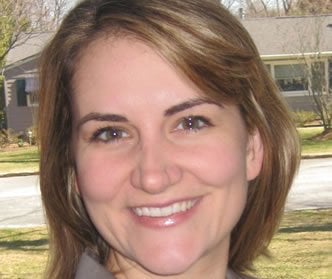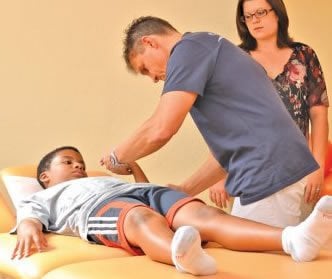20 Questions: Gregory Frazer, AuD
Dr. Gregory Frazer shares his perspective on the field of audiology and advice for students.
Written by: Juliet Farmer
Published on: February 19, 2012
Dr. Gregory Frazer shares his perspective on the field of audiology and advice for students.
Written by: Juliet Farmer
Published on: February 19, 2012

Kimberly O. Scanlon discusses her thoughts on the field of speech-language pathology and shares advice for students.
Written by: Juliet Farmer
Published on: February 12, 2012
Susan Schriber Orloff shares her thoughts about the field of Occupational Therapy and advice for students.
Written by: Juliet Farmer
Published on: February 5, 2012
Dr. Brendan Pratt shares his perspective on the field of child psychology and advice for students.
Written by: Juliet Farmer
Published on: January 29, 2012
Dr. Secili DeStefano shares her insights about the field of physical therapy and advice for students.
Written by: Juliet Farmer
Published on: January 22, 2012
Dr. Christopher K. Thiagarajah shares his perspective on the field of oculoplastics and advice for students.
Written by: Juliet Farmer
Published on: January 15, 2012

Dr. Joseph L. Fink III shares his thoughts on the history and evolution of the profession of pharmacy.
Written by: Joseph Fink
Published on: January 11, 2012
Heidi Nejezchleb Tringali shares her thoughts about the professional of Occupational Therapy, and advice for students.
Written by: Juliet Farmer
Published on: January 8, 2012
Dr. Jarrod Shapiro shares his insights about the field of podiatry and advice for students.
Written by: Juliet Farmer
Published on: December 22, 2011
Dr. Michael B. Rogers shares his insights on the field of orthodonics and advice for students.
Written by: Juliet Farmer
Published on: December 18, 2011
Read on for advice on how to maximize your learning in Introductory Pharmacy Practice Experiences.
Written by: Sarah Lawrence
Published on: December 14, 2011
Felicia Sison Conlan shares her insights about the field of speech-language pathology and the opportunities it offers students.
Written by: Juliet Farmer
Published on: December 11, 2011
Dr. Bettie Borden shares her insights about the profession of audiology and her advice for students.
Written by: Juliet Farmer
Published on: December 4, 2011
Dr. Jennie Kaufman Singer's clinical psychology career has included private practice, public service and academia.
Written by: SDN Staff
Published on: November 23, 2011
Dr. Lance Campbell shares his insights about the field of compounding pharmacy and the opportunities it offers
Written by: Rosrin Wuithiran
Published on: November 20, 2011
Dr. Ruchi Sahota shares her insights about the field of dentistry and her advice for students.
Written by: SDN Staff
Published on: November 13, 2011
This is the second article in our series about the physical therapy admissions process.
Written by: Gregory Brusola
Published on: November 9, 2011
Dr. Anthony S. Youn talks about his book and shares his insights about the medical profession and the field of plastic surgery.
Written by: Juliet Farmer
Published on: November 2, 2011

A brief overview of the process of applying to physical therapy programs.
Written by: Gregory Brusola
Published on: October 30, 2011